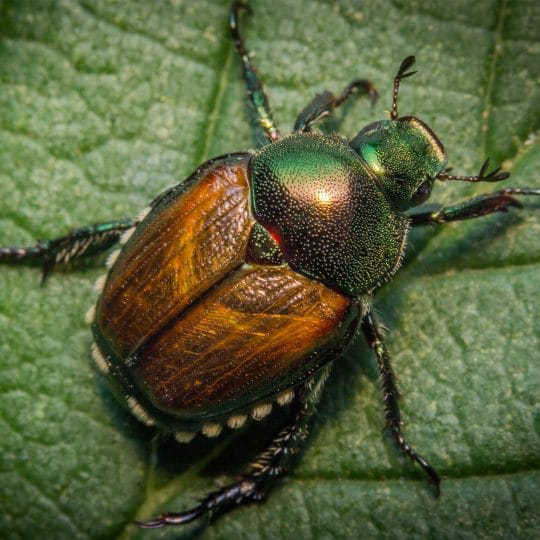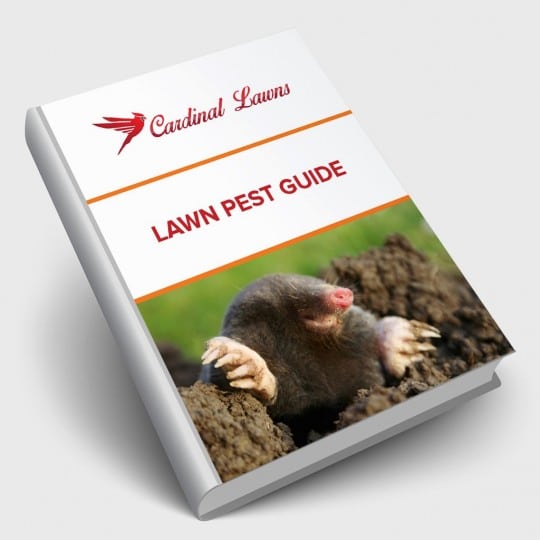Common Methods of Controlling Japanese Beetles
And Keeping Them From Coming Back
Posted
September 3, 2020

Just when you thought the spotted lanternfly was a detriment to your lawn and garden, another native Asian bug swoops in. Here are some methods of Japanese beetle control that can help save your plants from total destruction.
Signs of Beetle Damage
Japanese beetles are easy to identify. Not only are the shiny green and gold bodies recognizable, but the skeletonized leaves left behind is also an indication of an infestation. Some of their favorite plants to chew include:
- Apple
- Japanese maple
- Rose
- Pin oak
- Birch
- Cherry
- Other fruit trees, such as plum, apricot, and peach
They certainly have a sweet tooth, so monitor these plants more carefully, and always be careful when applying any insecticide on plants you plan to eventually eat.
Japanese Beetle Control
There are several ways to help control and prevent a Japanese beetle battle. Prevention is key, so many homeowners try to trap beetles before they can do any damage. Traps work best if you have a large yard where the trap is set far away from any garden. You can also deal with beetles while they’re in the grub stage. Apply a grub control product—like milky spore—to your lawn and rid yourself of the pest before they have a chance to mature and breed.
Help control further damage by spraying susceptible plants with a specialized insecticide. Products containing neem oil helps fend off beetles at the first signs of an attack.
Those who aren’t afraid of diving right in can easily pick beetles off the plant. These pests are slow, especially in the morning hours. Pick them off and toss them into a bucket of soapy water.
Professional Pest Control
If the battle of the beetles becomes too much to control, contact Cardinal Lawns for help. As experts in lawn and garden care, we can help come up with a plan for controlling a pest problem now and in the future.

Download Your FREE Lawn Pest Guide
Pests become most prevalent during the heat and humidity of summer. Take some time to learn about the signs of infestations before any damage can be caused to your landscape. This handy guide will teach you how to spot common lawn pests and how to keep them from causing harm to you and your property.